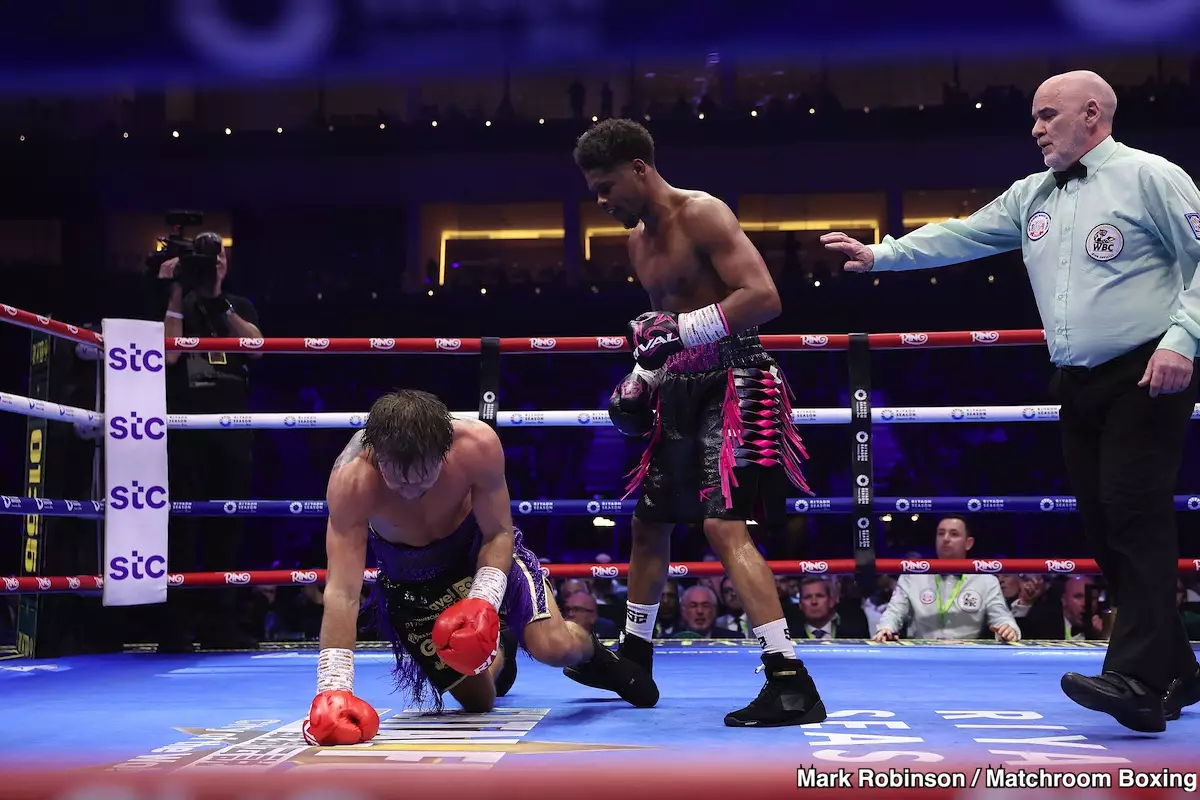The world of boxing is rife with rivalries, and it seems that Rolando “Rolly” Romero has staunchly thrown his hat into the ring against WBC lightweight champion Shakur Stevenson. In the ever-evolving landscape of the sport, where fighters often find themselves caught in heated exchanges regarding each other’s capabilities, Romero’s recent commentary on the alleged matchup with Gervonta “Tank” Davis has sparked significant chatter. He argues that Davis should avoid Stevenson entirely, claiming that Stevenson lacks the knockout power that would make their fight compelling.
Romero’s criticism of Stevenson is particularly biting. He accuses Stevenson of adopting a flighty style that would have him “jumping around the ring” akin to how he performed against Edwin De Los Santos. In Romero’s eyes, this evasive maneuvering is not indicative of a true champion. The notion of Stevenson possibly “jumping out of the ring” to avoid a confrontation with Davis underscores Rolly’s belief that Stevenson lacks the tenacity to stand and trade punches with the elite in the division.
The underlying sentiment here is that Romero perceives a stark contrast between true knockout artists and those who rely on tactical movement. He provocatively dismisses Stevenson’s recent performances, particularly focusing on the less-than-stellar showing against Josh Padley where it took Stevenson nine rounds to secure a victory. Such lengthy bouts against less formidable opponents contribute to a narrative that portrays Stevenson as a less compelling fighter.
While acknowledging that matchups in boxing often hinge on financial incentives, Romero suggests that Davis has little motivation to pursue a bout with Stevenson unless the financial rewards are immense. In a sport where revenue often dictates the fight calendar, it’s prudent for fighters to weigh their options carefully. The risk of engaging in a fight characterized by evasive tactics can lead to a dull affair, much to the displeasure of fans craving excitement.
Romero’s perspective reveals an industry concerned about fan engagement and the importance of a fight’s style. The concept of ‘chasing’ an opponent around the ring is a chore that fans generally dislike, making it essential for fighters like Davis to gauge the potential for an entertaining showdown before committing.
Romero concedes that Stevenson is a remarkable talent, referring to him as “one of the greatest technical fighters” of this generation. He recognizes that boxing can be as much an art form as a physical contest. However, this acknowledgment serves to amplify Romero’s frustration with Stevenson’s approach—one that emphasizes finesse and technique at the cost of aggression.
He contrasts Stevenson’s approach with that of fighters like Devin Haney, who actively seek knockouts. Romero’s dichotomy posits that a fighter’s willingness to engage and go for the finish is what differentiates legends from their contemporaries. This raises larger questions within the sport: Should technical prowess take precedence over a fighter’s ability to deliver explosive finishes?
Romero’s provocative statements advocate for evolution in Stevenson’s fighting style, suggesting that potential bouts with Davis or others in the lightweight category would be far more palatable if Stevenson could deliver more knockout victories. In essence, Rolly Romero is making a compelling case for the importance of fan engagement as much as technical skill within the sport.
Ultimately, the boxing world eagerly awaits what lies ahead for both Stevenson and Davis. Romero’s outspoken criticism may very well serve as a catalyst for change in the way Stevenson approaches his fights. Until then, discussions about their respective legacies will continue to articulate the fine line between artistry and the primal, visceral excitement that only a knockout can bring to the ring. As fans and pundits analyze every jab, hook, and slip, the unfolding drama between these modern gladiators promises to deliver cinemascope thrills in an arena that values both talent and entertainment.


Leave a Reply